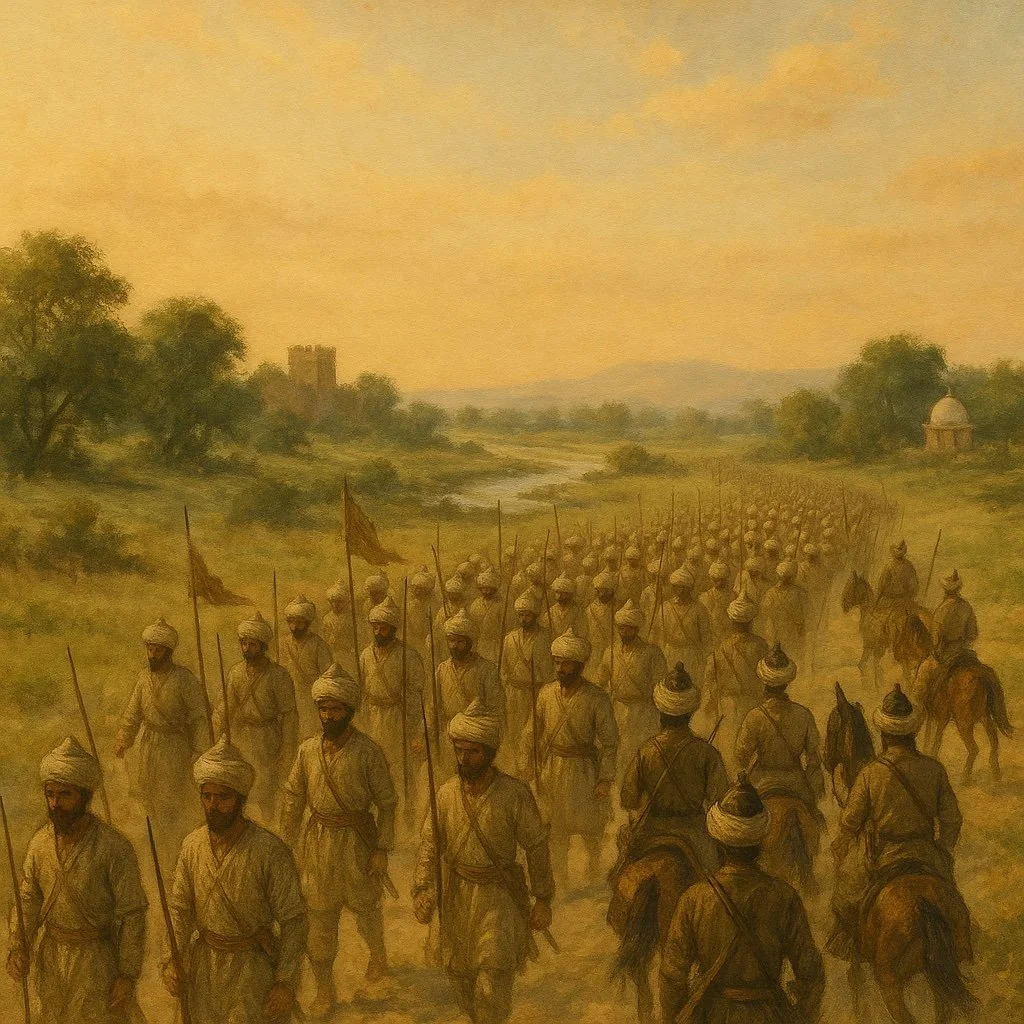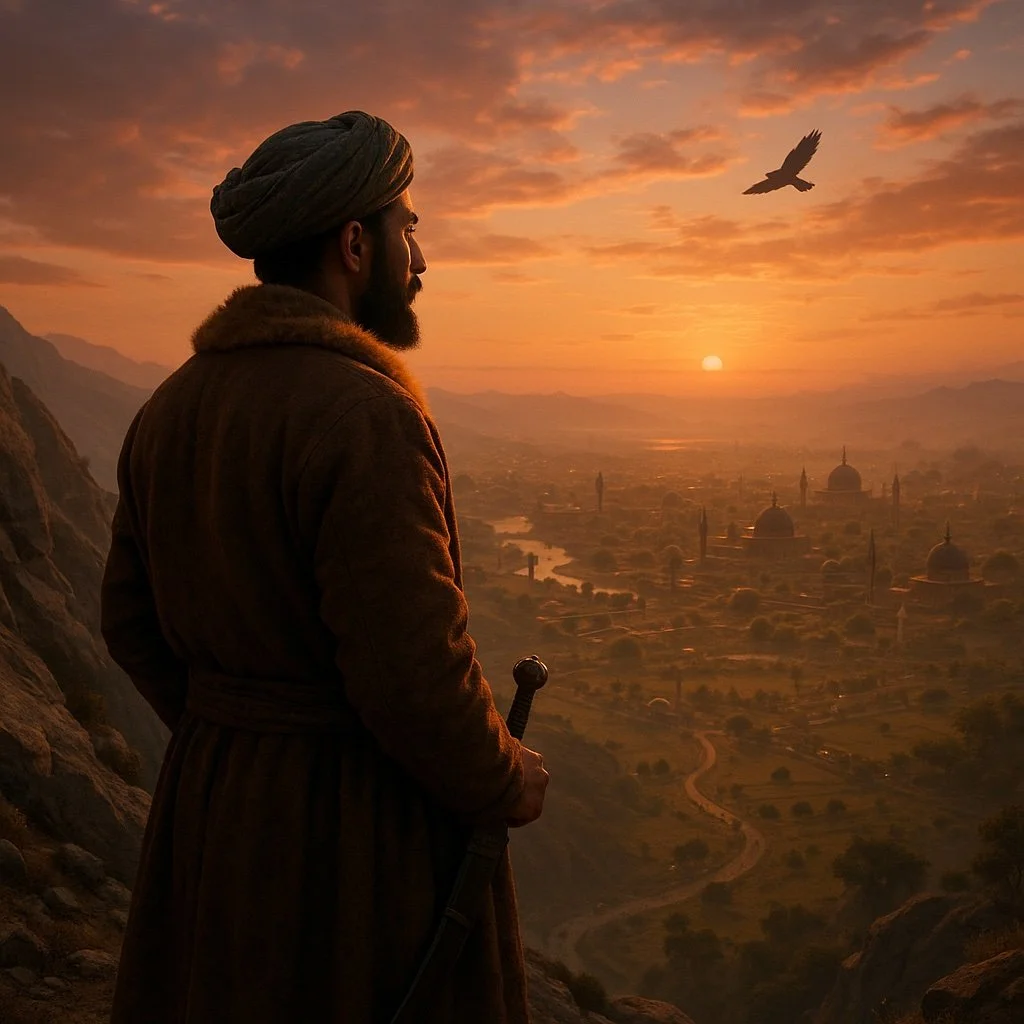BABUR
Who Was Babur?
Babur, originally named Zahir-ud-Din Muhammad, was the first emperor of the Mughal dynasty and ruled for a period of 4 years and 8 months (1526 - 1530). Born in 1483, he was the son of Umar Sheikh Mirza, a ruler in Central Asia, and a descendant of two powerful figures: Timur (a 14th-century conqueror) and Genghis Khan (the Mongol leader). Babur’s story is one of ambition, loss, and ultimately, conquest.
Early Life: Loss and Exile
Babur’s early life was marked by instability. At the age of 12, he inherited the throne of Fergana - a small kingdom in present-day Uzbekistan, but quickly lost it to a rival. His experiences during these early years shaped his character. After losing Fergana, Babur struggled with maintaining power and even faced exile. He spent much of his youth trying to regain control of his lost kingdom and seeking refuge in other territories. These challenges, however, contributed to his determination to expand his power, which ultimately led him to the Indian subcontinent.
Babur’s Move into India
Babur's decision to enter India was driven by his desire for greater territory and the opportunity to expand his influence. In 1525, he began his campaign against the Delhi Sultanate - a Muslim kingdom that ruled parts of northern India. The reigning sultan, Ibrahim Lodi, was unpopular and facing internal strife, which Babur saw as an opportunity.
Note: Ibrahim Lodi was the final ruler of the Lodi Dynasty - The same dynasty associated with the founding of Ludhiana.
In 1526, Babur’s forces faced Lodi’s army at the Battle of Panipat, located in modern-day Haryana. Despite being outnumbered, Babur's use of cannons and military strategy led to a victory. However, it’s important to note that Babur did not enter India with any deep cultural or historical connection to the region - his main goal was to expand his territory and establish a dynasty.
The Rise of the Mughal Empire: A New Power
Babur’s victory at Panipat marked the beginning of Mughal rule in India, but his reign was brief. He ruled from 1526 until his death in 1530, just four years. During this time, he struggled to solidify his control over a vast and diverse land, with resistance from local rulers and difficulties in managing his newly gained territories. Babur’s focus was mainly on military conquest rather than governance, and his short rule left many of the deeper challenges of empire-building to his successors.
While Babur made some efforts to establish stability, he did not have time to create lasting systems or institutions. Instead, he laid the foundations for his son, Humayun, who would face his own challenges in securing the empire.
The Mughal Empire - BABUR’s Impact on Punjab
Note: At the time of Babur’s conquests and the Mughal Empire, the Punjab state as we know it today did not exist. The region was divided into smaller territories and kingdoms, each with its own rulers, some of whom aligned with or resisted the Mughal advance. It wasn’t until nearly 400 years later that the Punjabi Confederacy rose to prominence, paving the way for Maharaja Ranjit Singh to unify the region, conquer nearby territories, and establish the Punjab State.
Though Babur’s reign did not focus on Punjab, the region played a pivotal role in his military campaigns. Strategically located between Central Asia and the Indian subcontinent, Punjab had long been a gateway for invaders from the north, making it a key point of entry for Babur’s forces. The region’s rich agricultural land and important trade routes made it a valuable territory for those seeking to expand their influence.
Before Babur’s arrival, the Punjab region was home to a mix of local rulers, many of whom were resistant to foreign invasions. Babur’s initial entry into Punjab faced opposition from various local kingdoms and their leaders. Some, saw Babur’s forces as a direct threat to their rule. This resistance helped set the stage for Babur's further campaigns, as he continued to push southward towards the Delhi Sultanate.
The Mughal Empire’s expansion into Punjab was not a smooth process. Babur’s forces had to contend with not only local rulers but also the region's difficult terrain and its complex political landscape. Babur's battle plans, particularly his use of artillery, proved essential in overcoming these challenges.
While Babur himself did not fully consolidate control over Punjab during his lifetime, his military campaigns paved the way for his successors to establish a stronger Mughal presence in the region. Over time, the Mughal Empire would exert significant control over Punjab, marking the beginning of centuries of Mughal influence in the area
However, the Mughals' relationship with Punjab was not always one of harmony. The region would continue to experience resistance and internal strife, especially as local Sikh, Rajput, and Afghan powers rose in opposition to Mughal authority. The legacy of Mughal rule in Punjab is therefore mixed, with both periods of relative stability and waves of rebellion, leading to the eventual rise of the Sikh Empire in the 18th century.
A depiction of Babur’s Army travelling through Punjab.
The Complex Legacy of Babur
Babur’s legacy is complex and contentious. His military victories established the Mughal Empire in India, but his time as ruler was short, and his methods were often focused on conquest rather than governance. Babur’s memoirs, known as the Baburnama, provide personal reflections on his life and campaigns, but they also reveal his struggles with maintaining power. He acknowledged the challenges he faced, including resistance from local rulers and the vast differences in terrain and culture across India.
Babur’s reign was only the beginning of what would become a long and often violent history of Mughal rule in India. The Mughals, under Babur’s successors, would establish a vast empire, but it’s important to remember that Babur’s legacy was not about creating a harmonious empire, but rather about securing power and influence through military conquest and political maneuvering. The impact of his rule on Punjab and the wider subcontinent would be felt for generations, but often in ways that were not entirely positive for the people living under Mughal control.
In conclusion, Babur’s rise to power is historically significant. The Mughal Empire’s expansion into India brought both positive change and turmoil to the regions it touched, including Punjab, and shaped the course of Indian history in ways that would be felt long after Babur’s death.
A depiction of Babur dressed in central Asian attire, looking over the Mughal Empire at its peak. This image is not an accurate depiction - it forshadows Babur’s accomplishments and the Mughal dominance.
To Babur's legacy and his army’s march through Punjab. To the strength of Punjab, that outlasted empires. With reverence - TrishSaab. 
